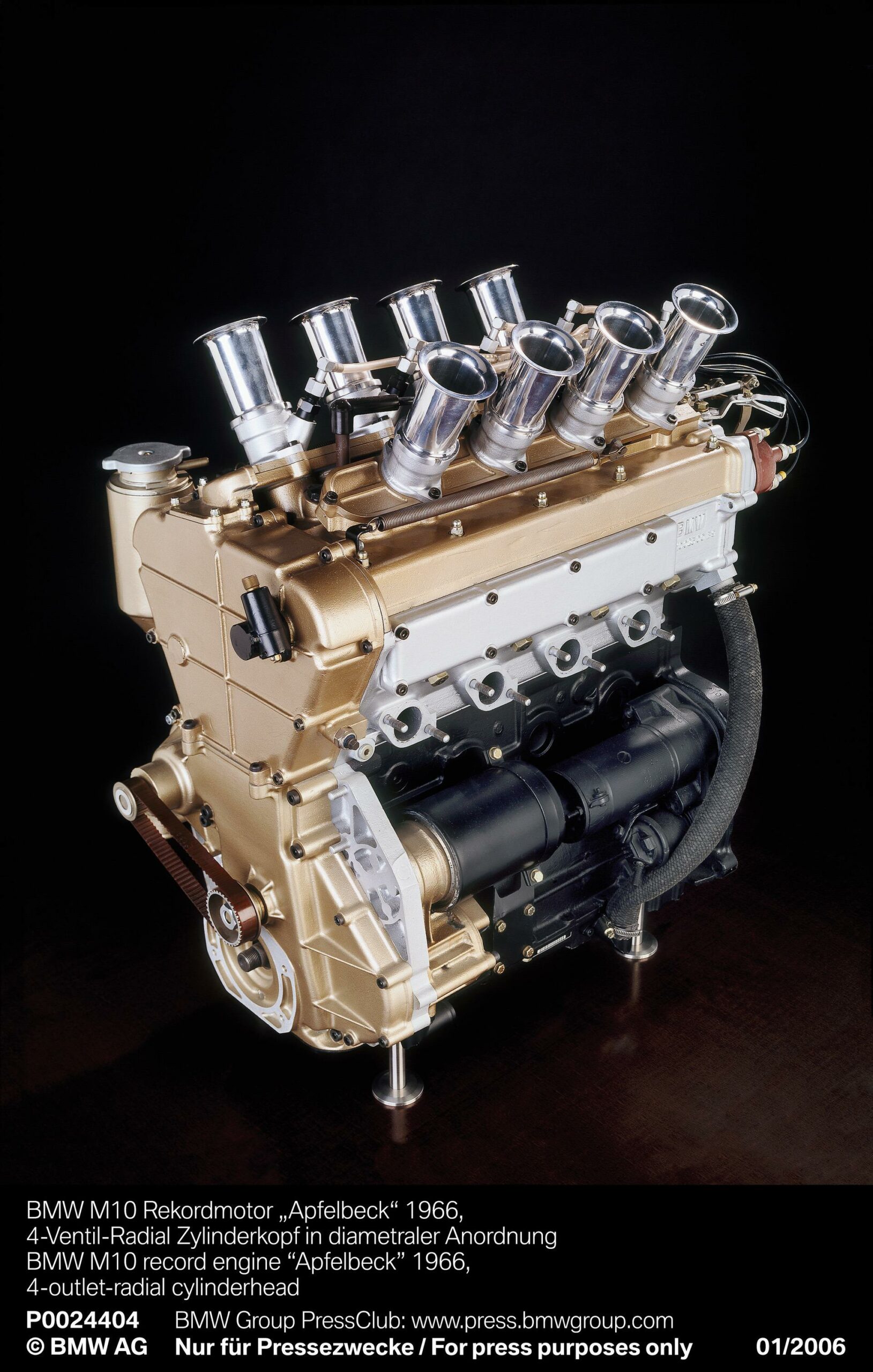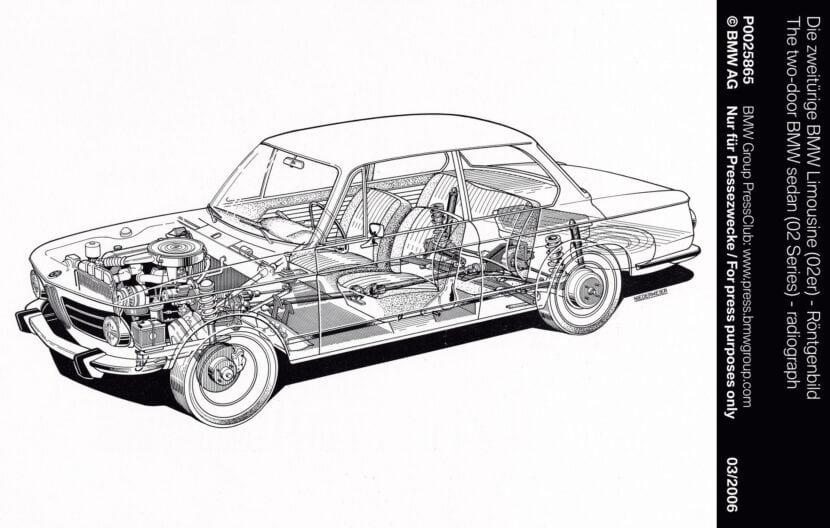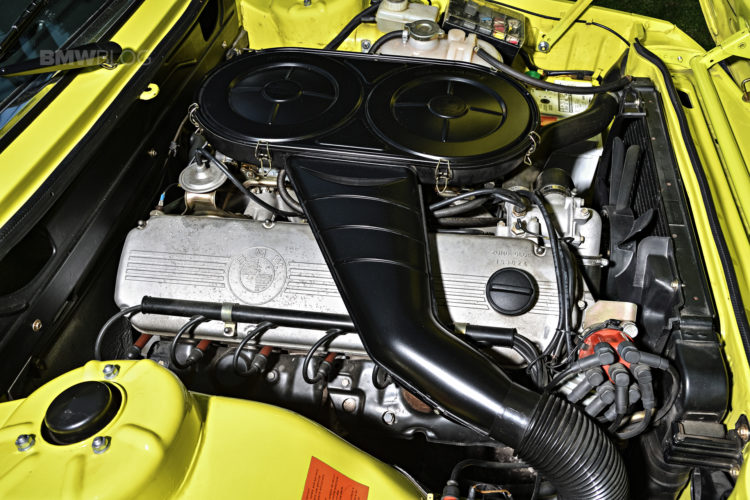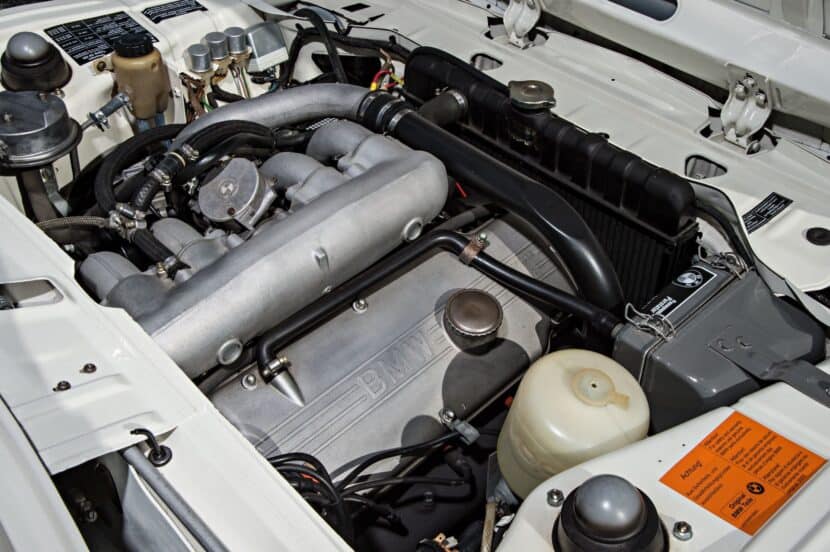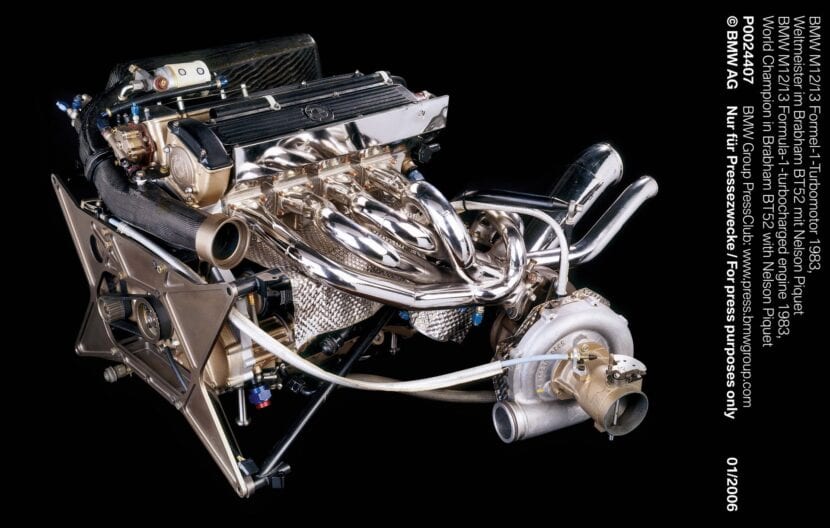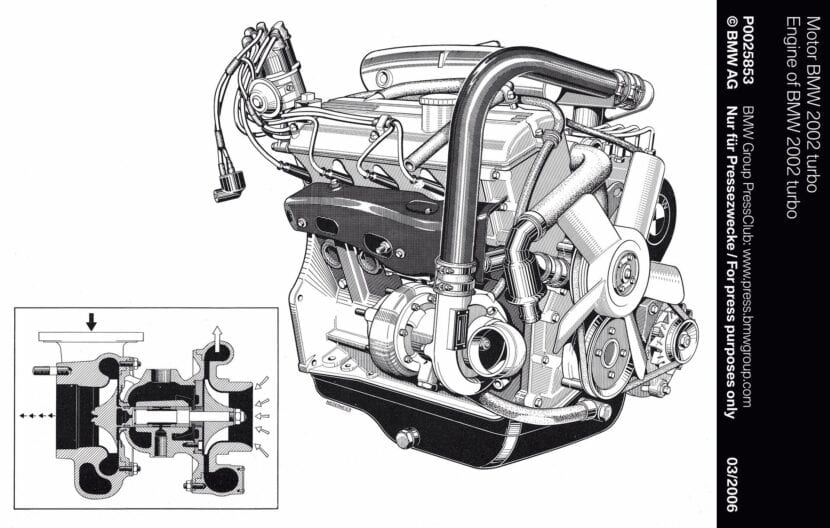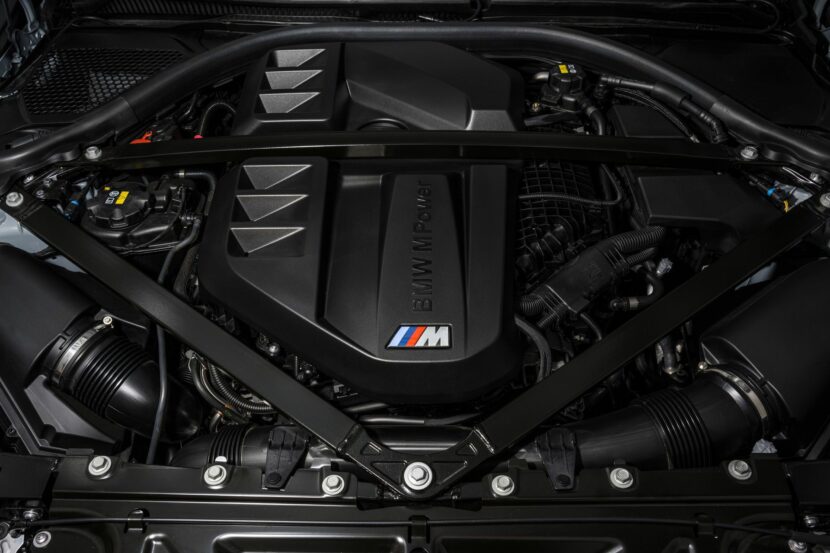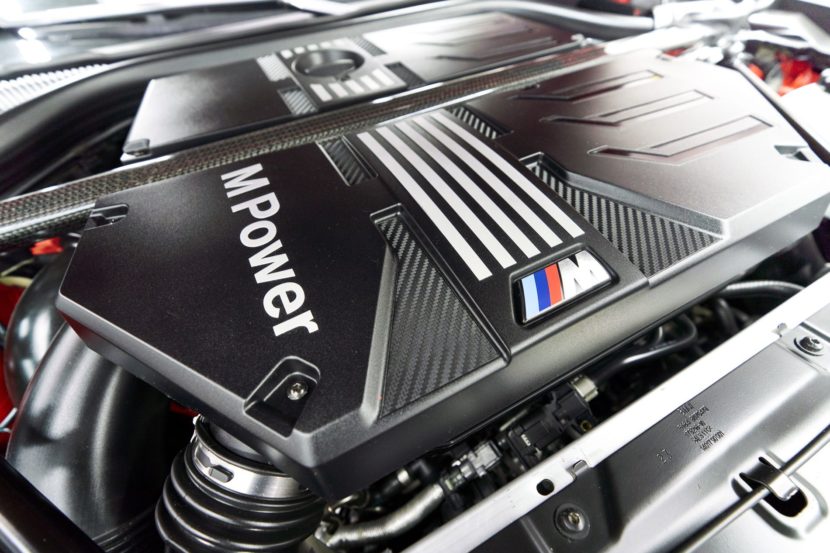The M10 BMW engine—BMW’s longest-running power plant—made its debut at the 1961 Frankfurt Motor Show alongside the all-new BMW 1500 ‘Neue Klasse’ (New Class) sedan. The 1500 was a new and very modern car with neat styling, front disc brakes, all-independent suspension with rear semi-trailing arms, and under the hood, that freshly minted SOHC M10 engine.
The Engineering
All new, the M10’s iron block (crankcase) was incredibly strong with large 82 mm bores, while the five crankshaft main bearings were set high up for extra rigidity, as opposed to being on the block centerline. The crankshaft itself was made from forged steel with 2-inch rod bearings and big counterweights. Forged steel connecting rods with studs and nuts for the rod end caps rather than plain bolts were used along with forged alloy pistons. Bore and stroke were 82 mm by 71 mm to give a capacity of 1499 cc, and power was rated at 80 bhp. It shows how far ahead of the pack it was when compared with the 45-odd bhp of a Volkswagen 1500 unit.
The oil pump bolted to the front of the block and ran from a separate short chain from a sprocket on the end of the crankshaft behind the timing chain sprocket. A pressed steel oil pan was used on these early cars, with a two-piece alloy/steel pan coming later on. The crossflow cylinder head was made from alloy with shaped hemispherical combustion chambers, and it had large valves for its time, 39 mm inlets and 35 mm exhausts, which filled the large bores.
Because of the operating angle of the valves, BMW could have used either two camshafts like an Alfa, but to reduce friction and weight, they used a single camshaft with rockers on either side. The camshaft was driven by a duplex (twin row) chain from the crankshaft with a plastic rail on the inlet side and a spring-tensioned sprocket on the exhaust side—this was revised before long. The cam lobes were lubricated by a hollow spray bar with suitable oil holes squirting pressurized oil on the gap between two lobes to lubricate both lobes.
The oil supply came from two galleries and two banjo bolts that distributed the oil supply into the spray bar. Rocker shafts were fitted into the head on either side of the cam with alloy rocker arms with steel tips for the wearing surface plus steel eccentric adjusters that operated on the valves. These eccentrics used a 10 mm nut and steel bolt and could be adjusted for the correct valve clearance. A cast alloy cam cover with studs and nuts was used.
The distributor was fitted at the back of the head and ran from a gear on the camshaft, while fuelling was by a single Solex 36 PDSI single choke carburetor supplied by a mechanical pump bolted to the side of the cylinder head, operated by a lobe on the cam. The cooling system was unconventional, with a remote thermostat linking the hoses from the top and bottom of the radiator and the water pump.
The M10 was a very tough and reliable engine suited to the high-speed operation of Autobahns, although there were a few instances of connecting rod breakage of the first batch of engines, soon rectified.
First Technical Revision
The first revision to the M10 was a capacity increase to 1800 cc in August/September 1963, achieved by an increase in bore size to 84 mm and the stroke to 80 mm giving 1773 cc. Power output was now 90 bhp with a single 38 PDSI single choke Solex carb—again, making a mockery of some homegrown engines.
The 1600 replaced the 1500 for 1964, and its 1573 cc capacity was achieved by using the 1500’s crank in the 1800 block. At this point, BMW replaced the original tensioner sprocket for the timing chain with a curved nylon-lined blade that proved far more reliable. The twin carburetor 1800 Ti and 1800 TiSa cars also arrived in ’64.
The Ti engine gained bigger valves (42 mm inlet, and 38 mm exhausts on later cars) plus a higher lift and longer duration cam and a higher compression ratio. With a pair of 40PHH Solex carbs, power was now a real DIN-rated 110 bhp. The 1800TiSa was then given an even higher compression ratio of 10.5:1 plus bigger 45DCOE Weber carbs to deliver 130 bhp.
BMW launched the Karmann-built 2000C Coupe in 1965, and with it came a new 2-liter engine. The bore size was increased to 89 mm, retaining the 80 mm stroke of the 1800 to give 1990 cc. The 2000C (all automatics) had a single 40 PDSI Solex carb to give 100 bhp with an 8.5:1 compression ratio, whilst the CS Coupe had twin Solex 40 PHH carbs to give 120 bhp with a 9.3:1 compression. Both 2-liter engines had the bigger 42 mm and 38 mm inlet and exhaust valves and were used a year later in the 1966 2000 saloon (single carb) and 2000 Ti (twin carb).
To reduce production costs, the 1800 engine was revised around this time with a capacity change from 1773 cc to 1766 cc, and BMW did this by combining the 2000’s 89 mm bore with the 71 mm crank from the 1600.
The even bigger news for 1966 was the 2-door BMW 1600 as well as a 1600Ti with 110 bhp in late 1967—and this was effectively replaced in 1968 by the legendary 2002. This hotshot was shortly bettered by a 120 bhp Ti version. More was to come, though.
A 130 bhp fuel injection version of the 2000 engine arrived in 1969. Fitted to the 2002Tii from 1971 and the 1969 2000Tii, the Tii used mechanical Kugelfischer fuel injection that required a revised cylinder head and a 10:1 compression ratio for truly electric performance of the time.
Used In The E12 5 Series
In 1972, the new E12 5 Series arrived with 520 and 520i versions. The M10 was revised with a new ‘triple hemi’ cylinder head chamber design and reshaped ports from the M30 with new matching pistons and new carburetors for the 520. These were a pair of Stromberg 175 CDET carburetors with the 520i using the existing Tii Kugelfischer injection. The 2002 went to the new E12 engines but with a new twin choke Solex 32/32DIDTA carburetor.
The BMW 2002 TURBO
The 2002 Turbo was the first European turbo road car, going into production in July 1973. Based on the 2002 Tii unit, it had a very low 6.9:1 compression and a KKK turbocharger with a slide throttle rather than a standard butterfly-type throttle. Giving 170 bhp at 5800 rpm with 180 nm of torque, the Turbo required skill to get the best from it. Turbo production ended in 1974 after only 1672 cars were built, thanks to the fuel crisis and some social commentary in the German parliament.
M12 Engines For Formula 1
BMW built a number of M12 turbocharged 1.5-litre engines for Formula 1 in the mid-eighties that gave 800 bhp in qualifying and 650 bhp for racing. This rose to 1100 bhp qualifying bhp by 1985 and gave Nelson Piquet the 1983 World Championship in an M12 powered Brabham. These M12 were built from highly modified M10 blocks, secondhand high mileage ones due to the lack of casting stresses.
The 2002 was replaced by the new E21 3 Series in 1975. The cylinder head and piston designs were again revised along with the carburation. The 316, 318, and 320 used the existing twin choke Solex 32/32DIDTA, whilst the 320i used Bosch K Jetronic injection, replacing Kugelfischer for economy and emissions with these new M10 engines going into the BMW 518 and 520 / 520i models from September 1975.
Replaced By M60/M20
For September 1977, the 2-liter M10 was replaced by an all-new 2-liter six-cylinder engine—the M60/M20. The 1600 and 1800 M10 continued, and in September 1980, the Duplex timing chain was replaced by a Simplex chain, and the drive gear on the back of the cam was changed so that the distributor now ran the other way. Fuelling was now by a new Pierburg twin choke 2B4 carb, and electronic ignition was also used.
A 1.8 liter unit with K Jet arrived for the LHD only E21 318i and E28 518i, and these same units were used in the 1982 E30 316 (1766 cc) and 318i models. K Jet was on its way out, however, and in September 1983, it was replaced by Bosch LE Jetronic fuel injection. The 316 and 518 were fitted with the Solex Pierburg 2BE ECU-controlled carburettor—much maligned, but not nearly enough. Power outputs were 90 bhp and 105 bhp respectively, and whilst that was not an on-paper advance on the original Neue Klasse engines, they were better on fuel and met all-important emissions regulations.
The M10’s replacement was already in the final stages of design. That engine was the new M40 launched in September 1987 for the revised E30 318i—as an engine, it was lighter, more powerful, and far better on fuel. The 316 used the carb M10 until July 1988, with the E28 518i production ending in December 1987. That signalled the end of the M10 production after 25 years and a link with the past gone.
Strengths and Weaknesses
Treat it well, and an M10 will do well over 100,000 miles. If neglected, it’s not so good. Valve guide wear is common, leading to top-end noise and blue smoke, and regular oil changes prevent a lot of that. Cam sprockets on the single-row chain engines can wear badly but are easily replaced. Camshaft wear is caused by not checking and cleaning the oil spray bar holes and ensuring that the banjo bolts are tight.
The spray bar can be rotated in its saddles once the banjos are out, and the oil supply holes very slightly enlarged with a small drill to increase oil supply and prevent blocking. BMW sells thread-locked banjo bolts for the M10 and M30 that have a slightly different thread pitch to reduce the chances of them working loose.
Don’t threadlock them yourself because the thread lock fluid will congeal in the centre of the banjo, starving the cam lobes of oil. As on the M30, the M10 spray bar only fits one way, and if you fit it the wrong way around, it will only lubricate four cam lobes. Regular valve lash adjustment is important, but if the rocker pads are worn down, you may need oversize eccentrics. Cylinder head corrosion is likely if the antifreeze is not replaced regularly, but if you need to replace it, it must be with the correct type—121, E12, or E21 casting types depending on the year of manufacture.
An oil light that takes ages to go out can be a knackered rubber O-ring on the oil supply pipe that supplies oil from the pump to the front of the block—a cheap part but an annoying job to replace.
Old Pierburg carbs are generally a pain and are best replaced by either a new Weber conversion kit such as the 32/36. Bosch K Jetronic and LE Jetronic systems are both good and reliable—K Jetronic needs servicing and setting up properly, and the main LE Jetronic weakness is the 7-pin relay for the fuel pump and injectors playing up.
Which Engine, Which Car?
- M115 – 1500 saloon 1499 cc
- M116 – 1600 cars until 1975, 1600 saloon, 1600 Coupe, 1602.
- M118 – 1800 saloon and 1802 until 1972, 1776 cc.
- M17, M05, M64, M15 – 1990 cc units from 1965 to 1975. 2000 saloon and 2002, 2000 C and CS Coupe, 520 and 520i.
- M10 – All engines from late 1975 and E21 – 316, 318, 318i, 320, 320i, 518, 518i
- M10 B18 – 1980 onwards E21 and E30 318, 318i, 518, and 518i E12 and E28


